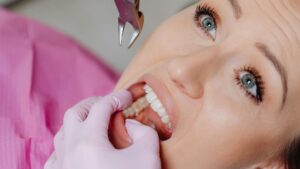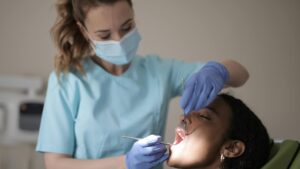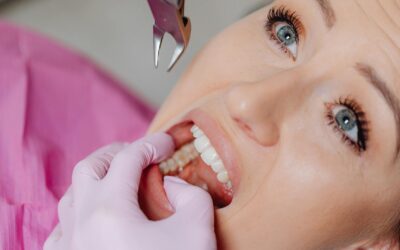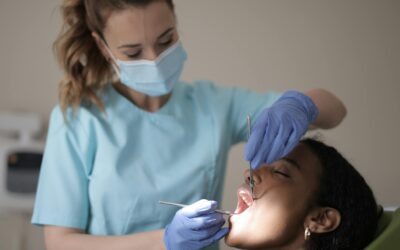Watching your child lose their first baby tooth is one of those joyful “growing up” moments every parent remembers. You might feel proud, curious, or even a little worried — especially if your child’s teeth seem early or late to fall out. So, when do kids lose their first tooth?
Most children lose their first baby tooth between ages 6 and 7, though some start as early as age 4 or as late as 8. The process is natural and signals that your child’s permanent teeth are ready to emerge.
This detailed guide explains the timeline, order, symptoms, tips, and when to call the dentist — all supported by reliable resources like the American Dental Association (ADA), Mayo Clinic, and WebMD.
💡 Important Note: Each child’s mouth is unique — early or late tooth loss doesn’t always mean a problem, but consistent delay may warrant a dentist’s check-up.
- Understanding How Teeth Develop
- Typical Timeline & Order of Tooth Loss
- When Exactly Do Kids Lose Their First Tooth?
- Signs a Tooth Is Ready to Fall Out
- The Process of Losing Baby Teeth
- How to Help Your Child’s Loose Tooth
- Early vs. Late Tooth Loss — Should You Worry?
- Why Baby Teeth Matter — Even Before They Fall Out
- When to See a Dentist
- Comparing Tooth Eruption in Kids & Animals
- How Parents Can Encourage Healthy Tooth Transition
- Expert Insight — What Dentists Say
- Quick Recap
- FAQs
Understanding How Teeth Develop
Before teeth start falling out, it’s helpful to understand how they grow in the first place.
🍼 Stage 1: Primary (Baby) Teeth Eruption
- Baby teeth, also called primary teeth, usually start erupting around 6 months of age.
- By age 3, most kids have a complete set of 20 baby teeth — 10 on top and 10 on the bottom.
- These teeth help your child chew, speak, and guide the alignment of their adult teeth.
🧒 Stage 2: Mixed Dentition
Between ages 6 and 12, kids go through the mixed dentition phase — meaning they have both baby and permanent teeth.
During this time, the roots of baby teeth dissolve naturally to make room for adult teeth underneath. When the roots are gone, the baby teeth become loose and eventually fall out on their own.
🦷 Stage 3: Permanent (Adult) Teeth Eruption
By the time your child is 13 years old, they’ll typically have 28 permanent teeth. The last four, known as wisdom teeth, usually erupt between 17 and 25.
You can read more about this developmental timeline on Mayo Clinic’s Children’s Dental Health Guide.
Typical Timeline & Order of Tooth Loss
Every child is unique, but most follow a predictable pattern.
| Tooth Name | Average Age Lost | Notes |
|---|---|---|
| Lower central incisors | 6–7 years | Usually the first to go |
| Upper central incisors | 7–8 years | Follow soon after |
| Lateral incisors | 7–9 years | Next to front teeth |
| First molars | 9–11 years | Help with chewing |
| Canines (cuspids) | 10–12 years | Pointed “fang” teeth |
| Second molars | 10–13 years | Last baby teeth to fall out |
This gradual process lets the mouth grow and adjust to new adult teeth.
💬 Note: If your child loses teeth out of sequence or has gaps for more than a few months without new teeth erupting, talk to a pediatric dentist.
When Exactly Do Kids Lose Their First Tooth?
- Average age: 6 years
- Early: Around 4 years — common in some families
- Late: Around 8 years — usually normal, but monitor progress
Several factors influence timing, including genetics, nutrition, and overall health. Kids who started teething early as babies often lose teeth earlier, too.
According to the ADA, girls tend to lose baby teeth slightly earlier than boys.
Signs a Tooth Is Ready to Fall Out
You’ll usually notice these gentle clues before the big moment:
- Wiggly tooth: Moves slightly when touched with the tongue or finger.
- Gum tenderness: Mild soreness or redness is normal.
- Small gaps: Appear as the permanent tooth pushes upward.
- Discomfort while eating: Especially when biting harder foods.
What’s Not Normal
- Severe pain or swelling
- Pus or bleeding around the gums
- Dark discoloration of the tooth
- Fever or bad breath
If you notice these, schedule a dental visit — they could signal infection or trauma.
The Process of Losing Baby Teeth
When a permanent tooth starts to develop, it pushes the baby tooth’s root upward. The root dissolves, loosening the baby tooth.
Eventually, the baby tooth falls out — often painlessly — leaving space for the permanent one. Sometimes, both are visible at the same time (“shark teeth”), which looks alarming but is usually harmless.
How to Help Your Child’s Loose Tooth
✅ Do’s
- Encourage gentle wiggling with clean fingers or the tongue.
- Keep brushing twice a day to prevent infection.
- Offer soft foods like yogurt or mashed potatoes if gums are sore.
- Celebrate milestones with a small reward or “tooth fairy” note.
❌ Don’ts
- Never force or pull the tooth before it’s ready.
- Avoid twisting or tying strings — this can cause bleeding.
- Don’t panic if mild bleeding occurs after it falls — rinse gently with warm saltwater.
🩹 Remember: If bleeding doesn’t stop after 10 minutes of pressure, contact a pediatric dentist.
Early vs. Late Tooth Loss — Should You Worry?
Most timing variations are harmless, but here’s when to get professional advice:
🕓 Early Tooth Loss (Before Age 4)
Possible causes:
- Tooth decay
- Injury or trauma
- Congenital absence of adult teeth beneath
🕗 Delayed Tooth Loss (After Age 8)
Possible causes:
- Genetic delay in eruption
- Crowding or misalignment
- Impaction (tooth blocked beneath gum)
The American Academy of Pediatric Dentistry (AAPD) recommends a dental exam if no teeth have loosened by age 8.
Why Baby Teeth Matter — Even Before They Fall Out
Baby teeth are more than placeholders — they’re essential for healthy development:
- Maintain spacing for adult teeth
- Support chewing and digestion
- Aid in clear speech
- Promote confident smiles and self-esteem
Premature loss can cause neighboring teeth to shift, creating alignment issues that may need orthodontic correction later.
Learn more on HealthyChildren.org (AAP).
🩺 When to See a Dentist
Schedule a dental check-up if you notice:
- No baby tooth loss by age 8
- Severe pain, swelling, or abscess
- Teeth falling out from injury
- Permanent teeth erupting crooked or behind baby ones
- Prolonged gaps without replacement teeth
Early dental visits (starting around age 1) can catch potential problems early and ease your child into regular oral-care habits.
🦷 Comparing Tooth Eruption in Kids & Animals
| Species | First Tooth Eruption | Total Teeth | Notes |
|---|---|---|---|
| Human child | 6 months | 20 baby → 32 adult | Gradual transition |
| Dog | 3–6 weeks | 28 baby → 42 adult | Faster process |
| Cat | 3 weeks | 26 baby → 30 adult | Fully replaced by 6 months |
| Horse | 6 days – 1 year | 24 baby → 40 adult | Extended eruption |
| Elephant | Birth | 26 baby → 24 adult | Teeth replaced 6 times in life |
This table illustrates how human tooth development is slower but more precisely aligned for speech and diet diversity.
How Parents Can Encourage Healthy Tooth Transition
- Keep regular dental checkups every six months.
- Fluoride toothpaste (a pea-sized amount) helps strengthen enamel.
- Balanced diet rich in calcium and vitamin D supports tooth and bone health.
- Limit sugary snacks and drinks to prevent early decay.
- Reassure your child — losing teeth is a natural sign of growing up!
💬 Tip: Creating excitement around the “tooth fairy” can make the experience fun and stress-free for children.
🧠 Expert Insight — What Dentists Say
According to Dr. Maria Lopez, pediatric dentist and ADA spokesperson:
“Parents often think early or late tooth loss is abnormal, but timing varies widely. What matters most is symmetry — if teeth fall out on both sides within a few months, it’s usually normal.”
Regular check-ups ensure proper alignment and spacing as permanent teeth come in.
🧾 Quick Recap
- First tooth loss: typically around age 6
- First to go: lower front (central incisors)
- Last to go: upper molars by age 12–13
- See a dentist if: loss is before 4 or after 8, or if there’s pain/swelling
❓ FAQs
What age do most kids lose their first tooth?
Most kids lose their first baby tooth around 6 years old, though anywhere between 4 and 7 is normal.
Which tooth falls out first in children?
Usually the bottom front teeth (lower central incisors) loosen and fall first, followed by the top front teeth.
Is it normal if my child hasn’t lost any teeth by age 8?
Yes, sometimes development is slower. But consult your dentist to ensure there are no impaction or eruption delays.
Can a child lose a tooth too early?
Yes. Early tooth loss (before 4) can happen due to decay, injury, or missing permanent teeth underneath.
What helps loosen a baby tooth naturally?
Encourage your child to gently wiggle it with a clean finger or tongue. Never pull before it’s ready.
Must Read: 50 Must-Know Tooth Health FAQs Answered by Experts
Disclaimer: The content provided in this article is for educational and informational purposes only. It does not substitute professional medical advice, diagnosis, or treatment. For guidance specific to your dental condition or recovery, please consult your dentist, oral surgeon, or licensed healthcare provider.










0 Comments